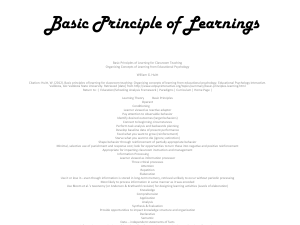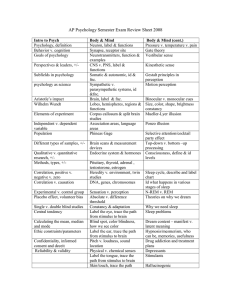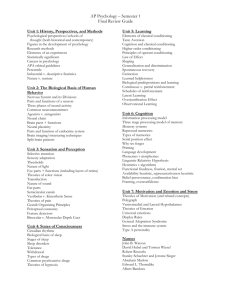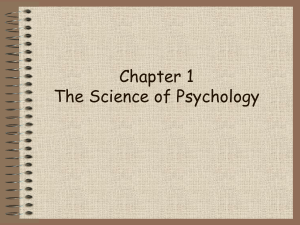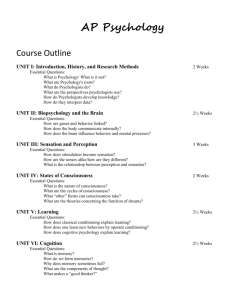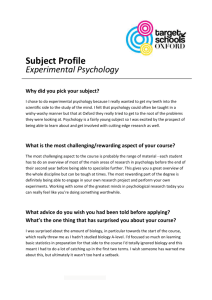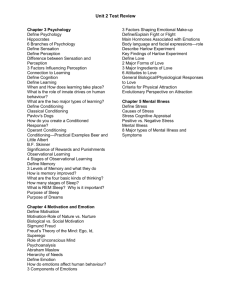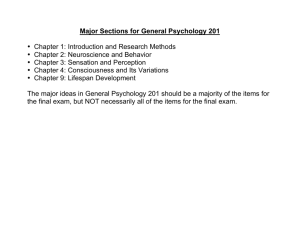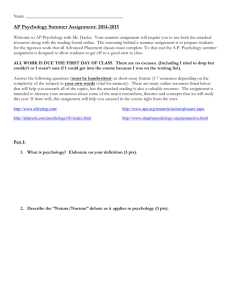AP Psychology Midterm Review
advertisement
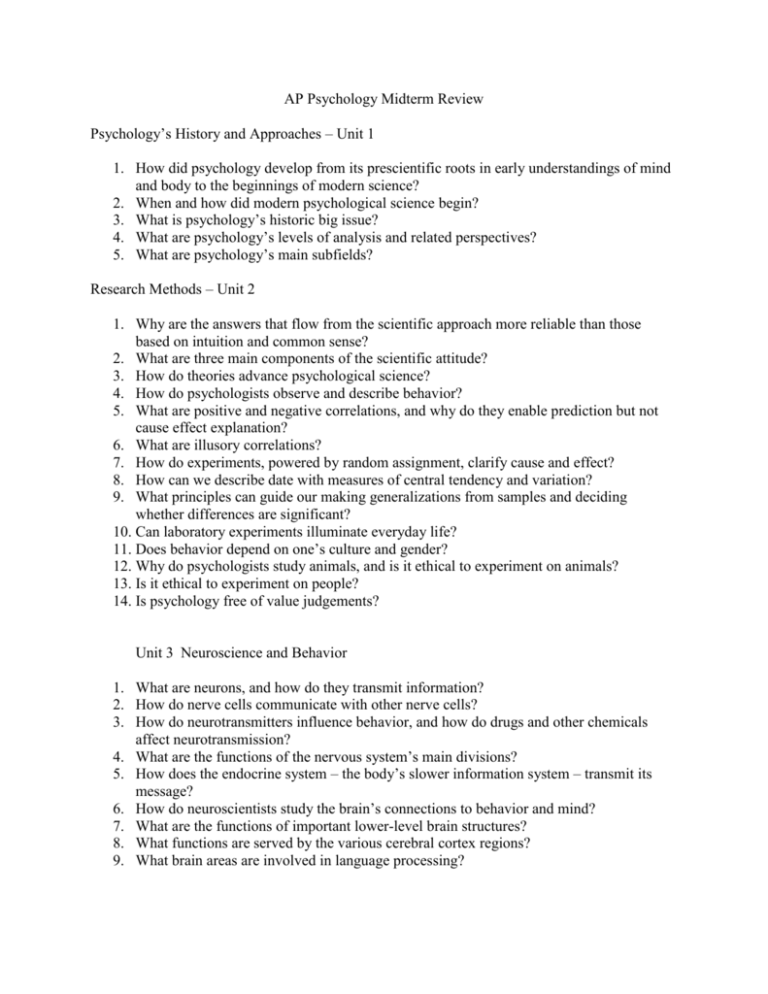
AP Psychology Midterm Review Psychology’s History and Approaches – Unit 1 1. How did psychology develop from its prescientific roots in early understandings of mind and body to the beginnings of modern science? 2. When and how did modern psychological science begin? 3. What is psychology’s historic big issue? 4. What are psychology’s levels of analysis and related perspectives? 5. What are psychology’s main subfields? Research Methods – Unit 2 1. Why are the answers that flow from the scientific approach more reliable than those based on intuition and common sense? 2. What are three main components of the scientific attitude? 3. How do theories advance psychological science? 4. How do psychologists observe and describe behavior? 5. What are positive and negative correlations, and why do they enable prediction but not cause effect explanation? 6. What are illusory correlations? 7. How do experiments, powered by random assignment, clarify cause and effect? 8. How can we describe date with measures of central tendency and variation? 9. What principles can guide our making generalizations from samples and deciding whether differences are significant? 10. Can laboratory experiments illuminate everyday life? 11. Does behavior depend on one’s culture and gender? 12. Why do psychologists study animals, and is it ethical to experiment on animals? 13. Is it ethical to experiment on people? 14. Is psychology free of value judgements? Unit 3 Neuroscience and Behavior 1. What are neurons, and how do they transmit information? 2. How do nerve cells communicate with other nerve cells? 3. How do neurotransmitters influence behavior, and how do drugs and other chemicals affect neurotransmission? 4. What are the functions of the nervous system’s main divisions? 5. How does the endocrine system – the body’s slower information system – transmit its message? 6. How do neuroscientists study the brain’s connections to behavior and mind? 7. What are the functions of important lower-level brain structures? 8. What functions are served by the various cerebral cortex regions? 9. What brain areas are involved in language processing? 10. To what extent can a damaged brain reorganize itself? 11. What do split brains reveal about the functions of our two brain hemispheres? 12. What are genes, and how do behavior geneticists explain our individual differences? 13. What is heritability, and how does it relate to individuals and groups? 14. What is the promise of molecular genetics research? 15. What are the key criticisms of evolutionary psychology? Unit 4 Sensation & Perceptions 1. What are sensation and perception? What do we mean by bottom-up processing and topdown processing? 2. How are we affected by selective attention? 3. What are the absolute and difference thresholds, and do stimuli below the absolute threshold have any influence? 4. What is the function of sensory adaptation? 5. What is the energy that we see as visible light? 6. How does the eye transform light energy into neural messages? 7. How does the brain process visual information? 8. What theories help us understand color vision? 9. What are the characteristics of air pressure waves that we hear as sound? 10. How does the ear transform sound energy into neural messages? 11. What theories help us understand pitch perception? 12. How do we locate sounds? 13. What are the common causes of hearing loss? 14. How do we sense touch and sense our body’s position and movement? How do we experience pain? 15. How do we experience taste? 16. How do we experience smell? 17. How did Gestalt psychologists understand perceptual organization? 18. How did figure-ground and grouping principles contribute to our perceptions? 19. How do we see the world in three dimensions? 20. How do we perceive motion? 21. How do perceptual constancies help us organize our sensations into meaningful perceptions? 22. How adaptable is our ability to perceive? 23. How do our expectations, contexts, and emotions influence our perceptions? States of Consciousness 1. 2. 3. 4. 5. How do our biological rhythms influence our daily functioning? What is the biological rhythm of our sleep? How does sleep loss affect us? What is sleep’s function? What are the major sleep disorders? 6. What do we dream? 7. What is the function of dreams? 8. What is hypnosis, and what powers does a hypnotist have over a hypnotized subject? 9. What are depressants, and what are their effects? 10. What are stimulants, and what are their effects? 11. What are hallucinogens, and what are their effects? Unit 5 Learning & Memory (Ch. 8 & 9) Learning *Learning (experience) *Pavlov / Classical conditioning (Stimulus – Response) *C.C. explanations—continuity, stimulus substitution, cognitive) *NS, UCS, UCR, CS, CR (1/2 second rule) *Acquisition, generalization, discrimination, extinction, spontaneous recovery *Taste aversion (John Garcia) *Thorndike / Law of effect *Skinner / Operant Conditioning *Shaping *Positive reinforcement / Negative reinforcement *Positive / Negative punishment *Continuous reinforcement / Partial reinforcement (VR, FR, VI, FI) *Social Learning / Observational learning (Soc. Cognitive) *Latent learning Memory *Ebbinghaus—nonsense syllables (human memory) *Mnemonic devices *Chunking *Method of loci / Peg method *Spacing effect *Serial position effect (Primacy / Recency effect) *State-dependent memory *iconic memory *echoic memory *Source amnesia / Retrograde amnesia / Anterograde amnesia *Flashbulb memory *Sensory Memory (registry) *Short-term memory *Long-term memory *Proactive interference / retroactive interference *Recall /recognition *Explicit memory (declarative) --Semantic & episodic memory *Implicit memory (procedural) *Rehearsal *Informational-processing view of memory— Encoding, storage, retrieving (Atkinson & Shiffrin)

